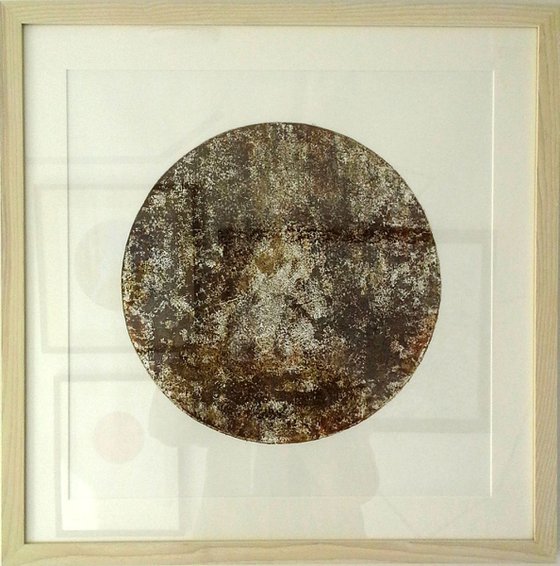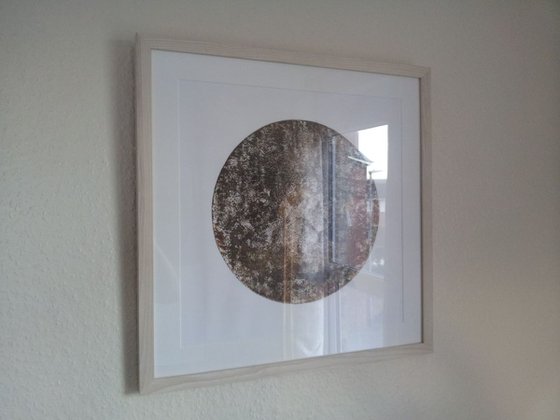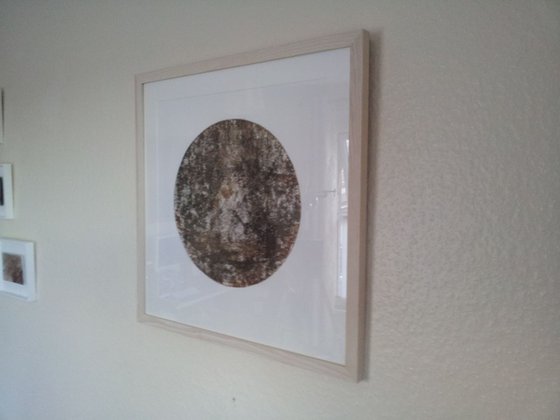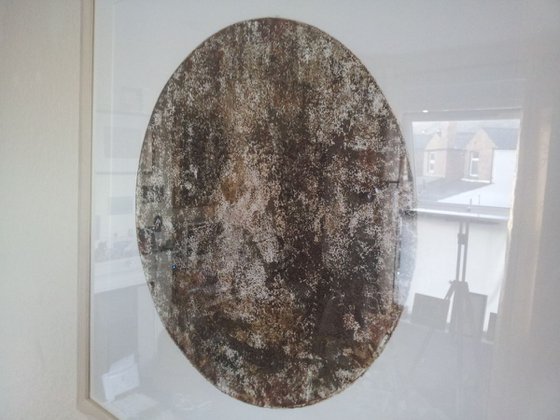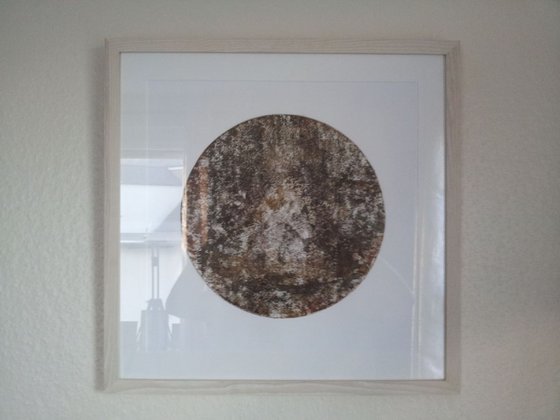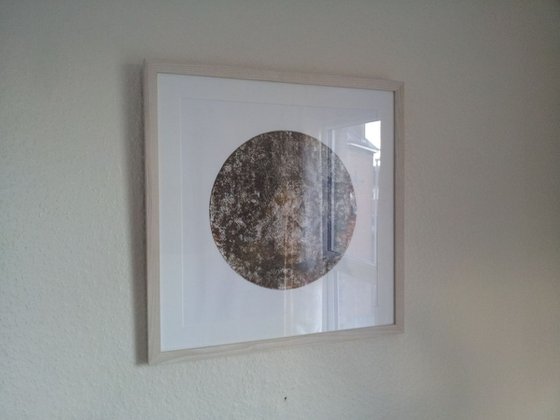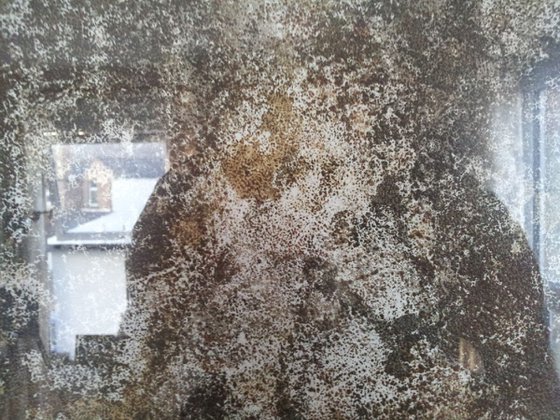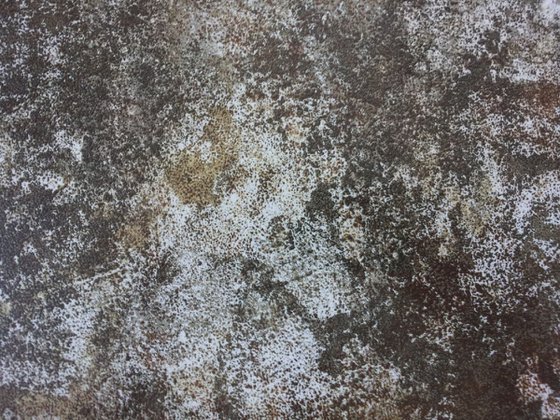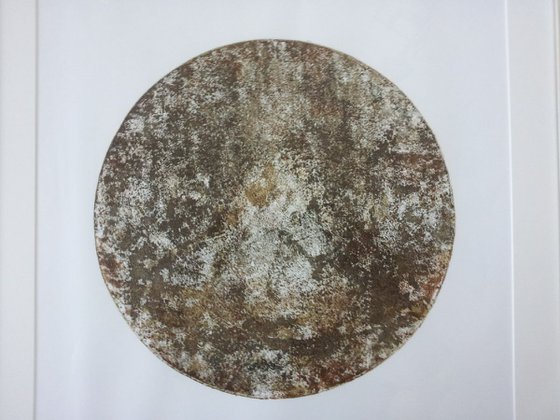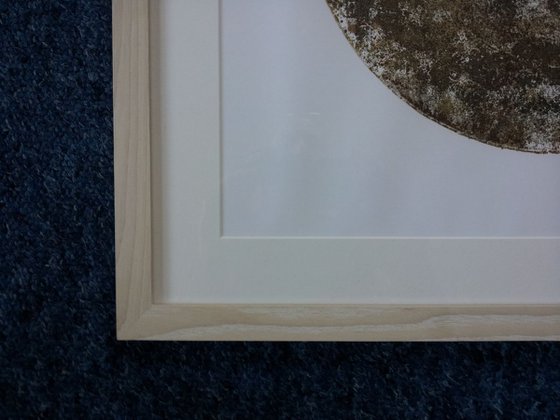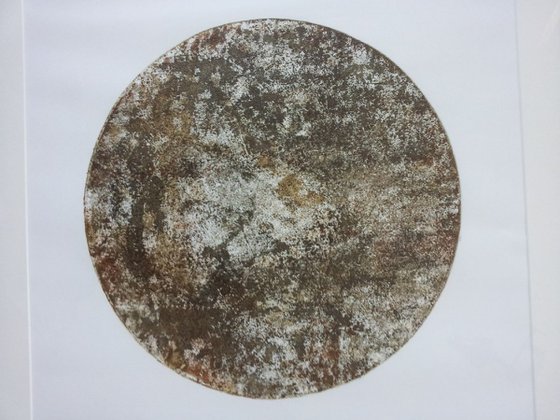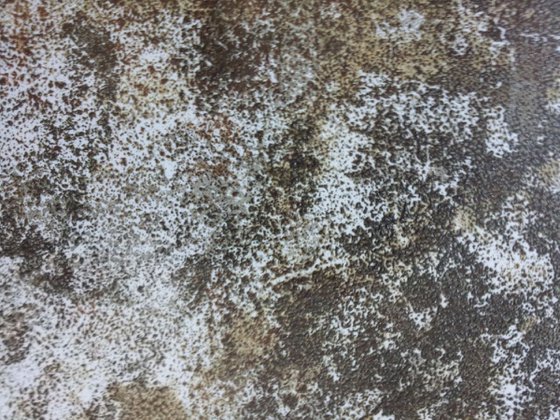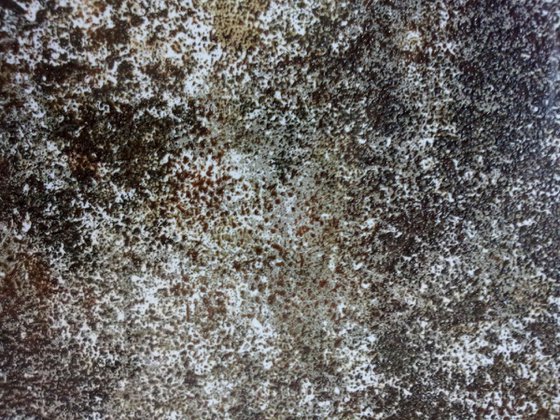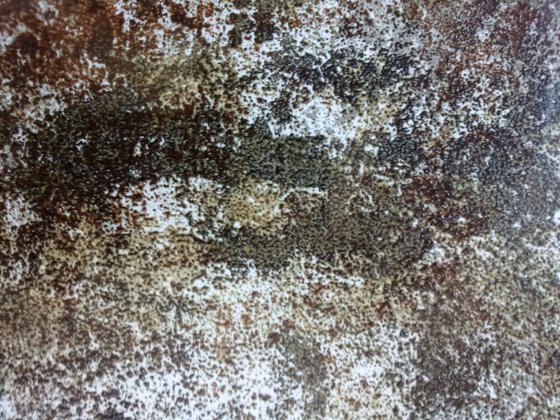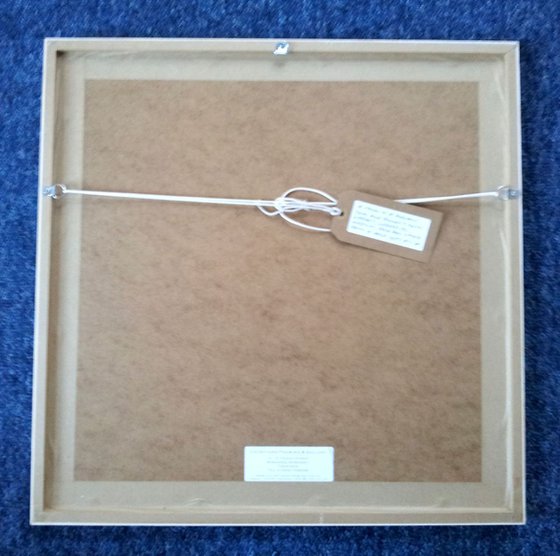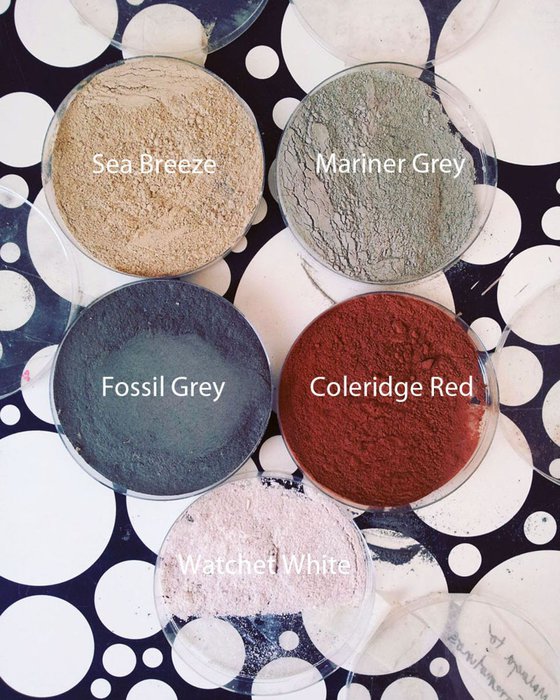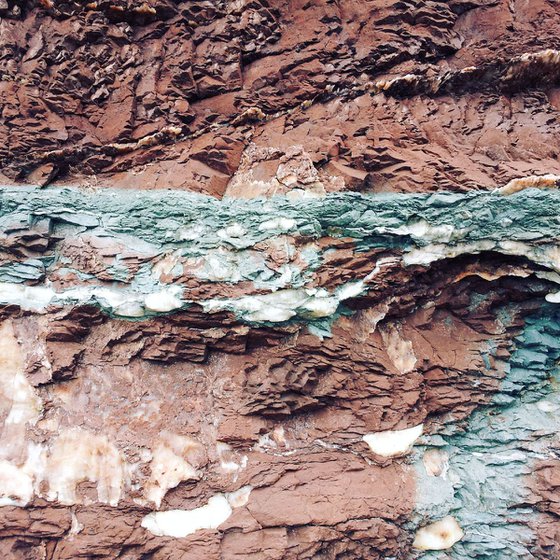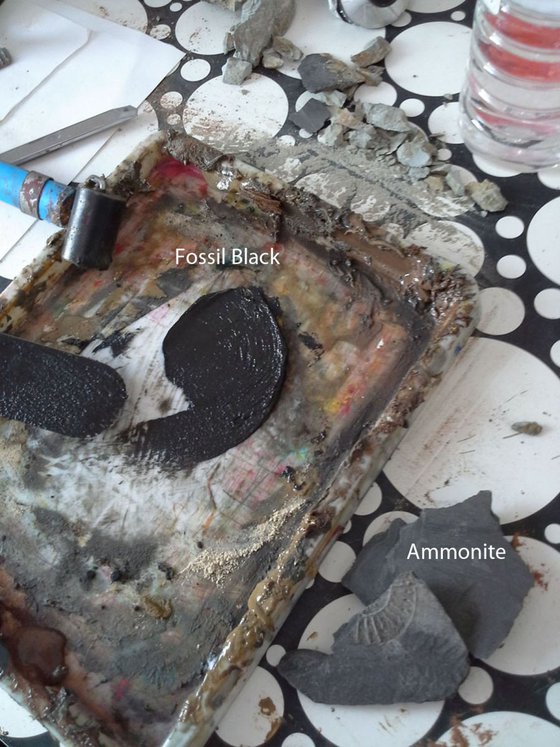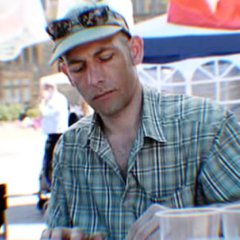- By medium
- By subject
- By budget
- Sales
- Gift cards
- Discover all art
- Artists
- Editors’ picks
- Ideas
Original artwork description:
Inspired by Samuel Colerige, Kubla Khan and his philosophy, this monotype print explores the process of making through the use of pigments collected from Watchet. I imagined where Samuel Coleridge might have walked all those years ago, researching and exploring his philosophy on Romanticism, making the work through allowing the material to evolve via a process of intervention.
Through the philosophy of Samuel coleridge, investigating what it means to create a work of art, whether written, visual, poetry or performance, through the process of creating without a preconcieved concept, exploring the relationship between Romanticism and Zen philosophy, these works utilise material from the landscape, collected during walks in the environment of Watchet.
The collected material, usually rocks, are ground down into powder to form printing inks and paint. Through the collaborative process of working with the material, the artist's thoughts and the pressure applied through the artist's hands and fingers, transfer memories on the surface, recorded as a mark by the material, itself playing its part in doing what it wants to do in unison with the artist.
Through this collaborative shamanic approach, Adam explores the transferrence of memory and energy into a new aesthetic as a monotype print-painting, exploring the connections with have between the internal and external Nature and our reliance and responsibility to the environment.
The ideas explored through this SAW Creative Pathway residency include:
* Defining the nature of Romanticism and how it may be approached from the starting point of the primary importance of the 'free expresion of the feelings of the artist'.
* The importance the Romantics placed on emotion and summed up through the German Romanticist Caspar David Friedrich that 'the artist's feeling is the law'.
*William Wordsworth's ideal that poetry should begin as 'the spontaneous over-flow of powerful feelings', which the poet then 'recollect[s] in tranquillity...'
* Expressing feelings through which the content of the art had to come from the imagination of the artist, with as little interference as possible from 'artificial' rules that dictated what the work should consist.
* Samuel Taylor Coleridge and others believed there were natural laws that the imagination ... would unconsicously follow through artistic inspiration if left alone.
* The influence of models from other works was considered to impede the creator's own imagination, so that originality was essential and the artist was able to produce their own original work through the process of 'creating from nothingness' - key to Romanticist ideas and know as 'romantic originality'.
This print was chosen and exhibited as part of the anniversary of Samuel Coleridge who lived in the area of Taunton in the small village of Nether Stowey, where he was inspired to write this poem after a concoction of opium, bringing on a Vision in a Dream.
Materials used:
Handmade Rock Pigment, Watchet Rocks, Medium, Linseed Oil, Medium, seawater from a hole left by a fossil hunter.
Tags:
#rocks #print #printmaking #monotype #vision #visionary #printing #pigments #adam grose #a vision #samuel coleridge #kubla khan #handmade ink #neoromanticism #romenticismVISION IN A DREAM (2016) Monoprint
by Adam Grose MA PGCE
19 Artist Reviews
£715
- Monoprint on Paper
- One of a kind artwork
- Size: 55 x 55 x 2.3cm (framed) / 31 x 31cm (actual image size)
- Framed and ready to hang
- Signed on the back
- Style: Organic
- Subject: Abstract and non-figurative
Loading
Original artwork description
Inspired by Samuel Colerige, Kubla Khan and his philosophy, this monotype print explores the process of making through the use of pigments collected from Watchet. I imagined where Samuel Coleridge might have walked all those years ago, researching and exploring his philosophy on Romanticism, making the work through allowing the material to evolve via a process of intervention.
Through the philosophy of Samuel coleridge, investigating what it means to create a work of art, whether written, visual, poetry or performance, through the process of creating without a preconcieved concept, exploring the relationship between Romanticism and Zen philosophy, these works utilise material from the landscape, collected during walks in the environment of Watchet.
The collected material, usually rocks, are ground down into powder to form printing inks and paint. Through the collaborative process of working with the material, the artist's thoughts and the pressure applied through the artist's hands and fingers, transfer memories on the surface, recorded as a mark by the material, itself playing its part in doing what it wants to do in unison with the artist.
Through this collaborative shamanic approach, Adam explores the transferrence of memory and energy into a new aesthetic as a monotype print-painting, exploring the connections with have between the internal and external Nature and our reliance and responsibility to the environment.
The ideas explored through this SAW Creative Pathway residency include:
* Defining the nature of Romanticism and how it may be approached from the starting point of the primary importance of the 'free expresion of the feelings of the artist'.
* The importance the Romantics placed on emotion and summed up through the German Romanticist Caspar David Friedrich that 'the artist's feeling is the law'.
*William Wordsworth's ideal that poetry should begin as 'the spontaneous over-flow of powerful feelings', which the poet then 'recollect[s] in tranquillity...'
* Expressing feelings through which the content of the art had to come from the imagination of the artist, with as little interference as possible from 'artificial' rules that dictated what the work should consist.
* Samuel Taylor Coleridge and others believed there were natural laws that the imagination ... would unconsicously follow through artistic inspiration if left alone.
* The influence of models from other works was considered to impede the creator's own imagination, so that originality was essential and the artist was able to produce their own original work through the process of 'creating from nothingness' - key to Romanticist ideas and know as 'romantic originality'.
This print was chosen and exhibited as part of the anniversary of Samuel Coleridge who lived in the area of Taunton in the small village of Nether Stowey, where he was inspired to write this poem after a concoction of opium, bringing on a Vision in a Dream.
Materials used:
Handmade Rock Pigment, Watchet Rocks, Medium, Linseed Oil, Medium, seawater from a hole left by a fossil hunter.
Tags:
#rocks #print #printmaking #monotype #vision #visionary #printing #pigments #adam grose #a vision #samuel coleridge #kubla khan #handmade ink #neoromanticism #romenticism14 day money back guaranteeLearn more
